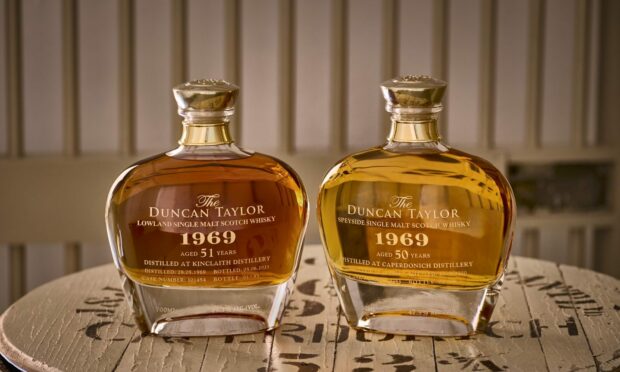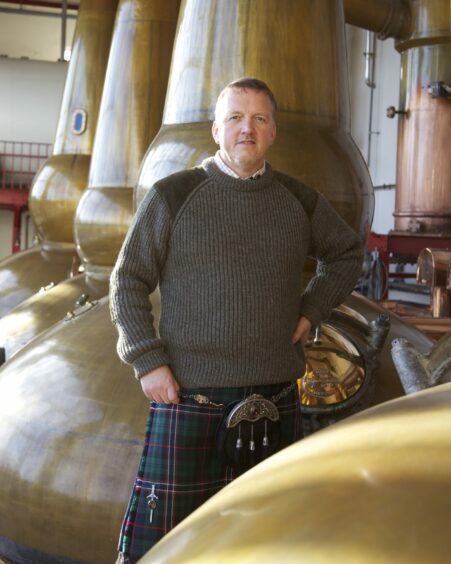Rare, collectible whisky worth thousands of pounds from two defunct distilleries is available by ballot from Duncan Taylor Scotch Whisky.
It is the first time the Huntly-based bottler has launched drams dating back more than 50 years.
The bottles of Kinclaith and Caperdonich boast recommended retail prices of £12,300 and £10,750 respectively.
It’s the start of an exciting chapter at Duncan Taylor as we plan to release a selection of rare malts from our portfolio over time.”
Euan Shand, chairman, Duncan Taylor Scotch Whisky.
The origins of Kinclaith date back as far as 1957. Located south of the River Clyde, the small malt distillery – the last built in Glasgow – formed part of the massive Strathclyde grain whisky complex.
Ingredients for Kinclaith were all locally procured and the liquid matured in a combination of American and European oak casks, producing malt whisky over an 18-year period.
The Kinclaith still fell idle in 1975 and was demolished to make way for an extension to the Strathclyde grain operations.
19th Century roots
Production from Caperdonich Distillery, in Rothes, dates back to 1898.
It was halted for about six decades before a restart in 1965 to meet growing demand for whisky brand Glen Grant, but ended again in 2002.
New pot stills introduced in 1967 were steam-heated, which was a modern technology at the time.
Half a century old
The launch of a Kinclaith 51-year-old and Caperdonich 50-year-old form part of a collection of rare whisky casks from closed distilleries that Duncan Taylor has matured in its warehouse.
Euan Shand, the company’s owner and chairman, said: “It is a privilege to be the custodian of these stunning rare casks.
“Originally filled back in 1969, it’s the start of an exciting chapter at Duncan Taylor as we plan to release a selection of rare malts from our portfolio over time.”
A limited release of fewer than 100 handcrafted glass decanters of each whisky is being made available worldwide.
The bottles will be individually numbered, engraved and housed in a lockable framed box, inside a brushed stainless steel carrying case.
Founded in Glasgow, during the late 1930s, Duncan Taylor started as a whisky broker and over the decades built up large stocks. The business was acquired by Mr Shand in 2001.












Conversation